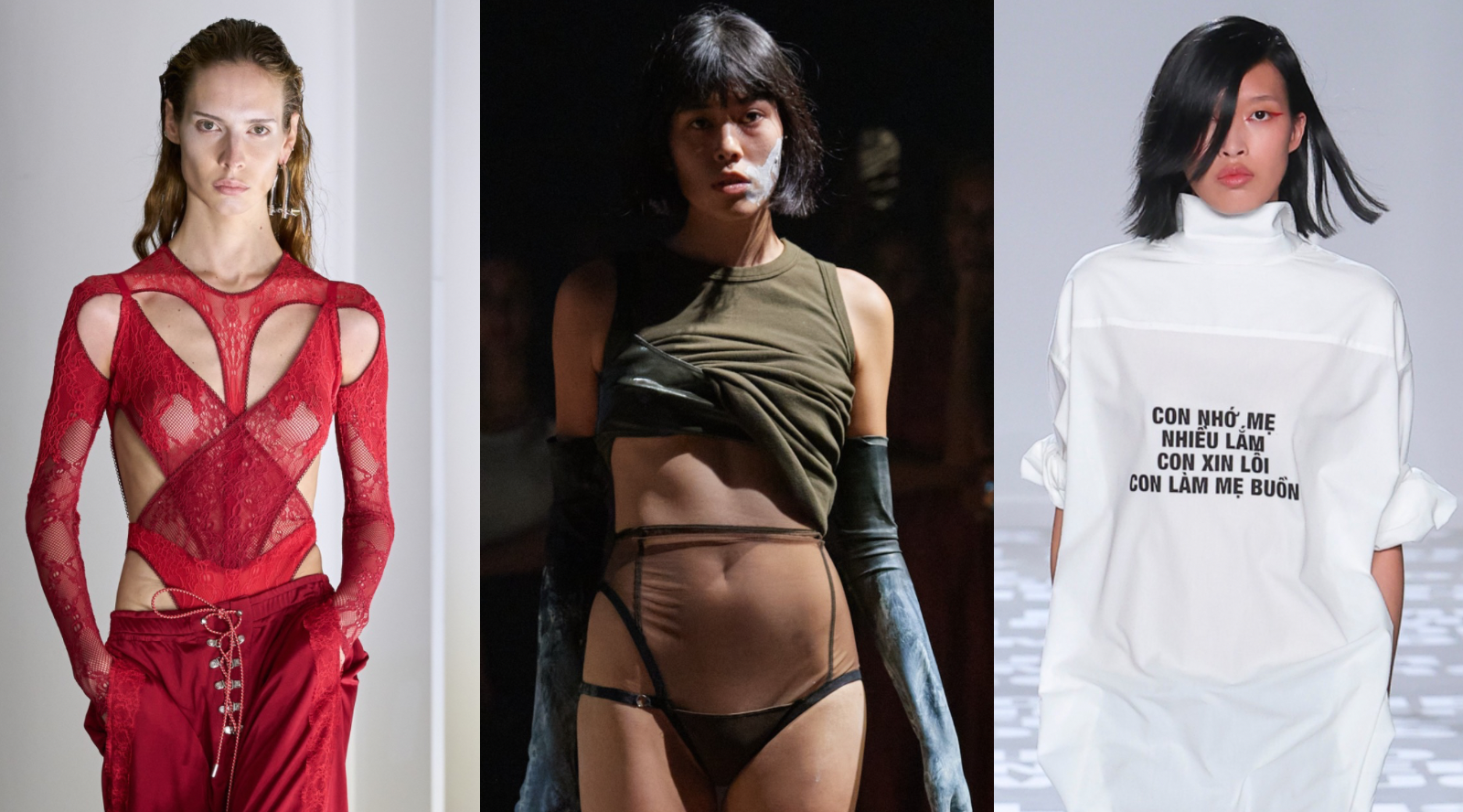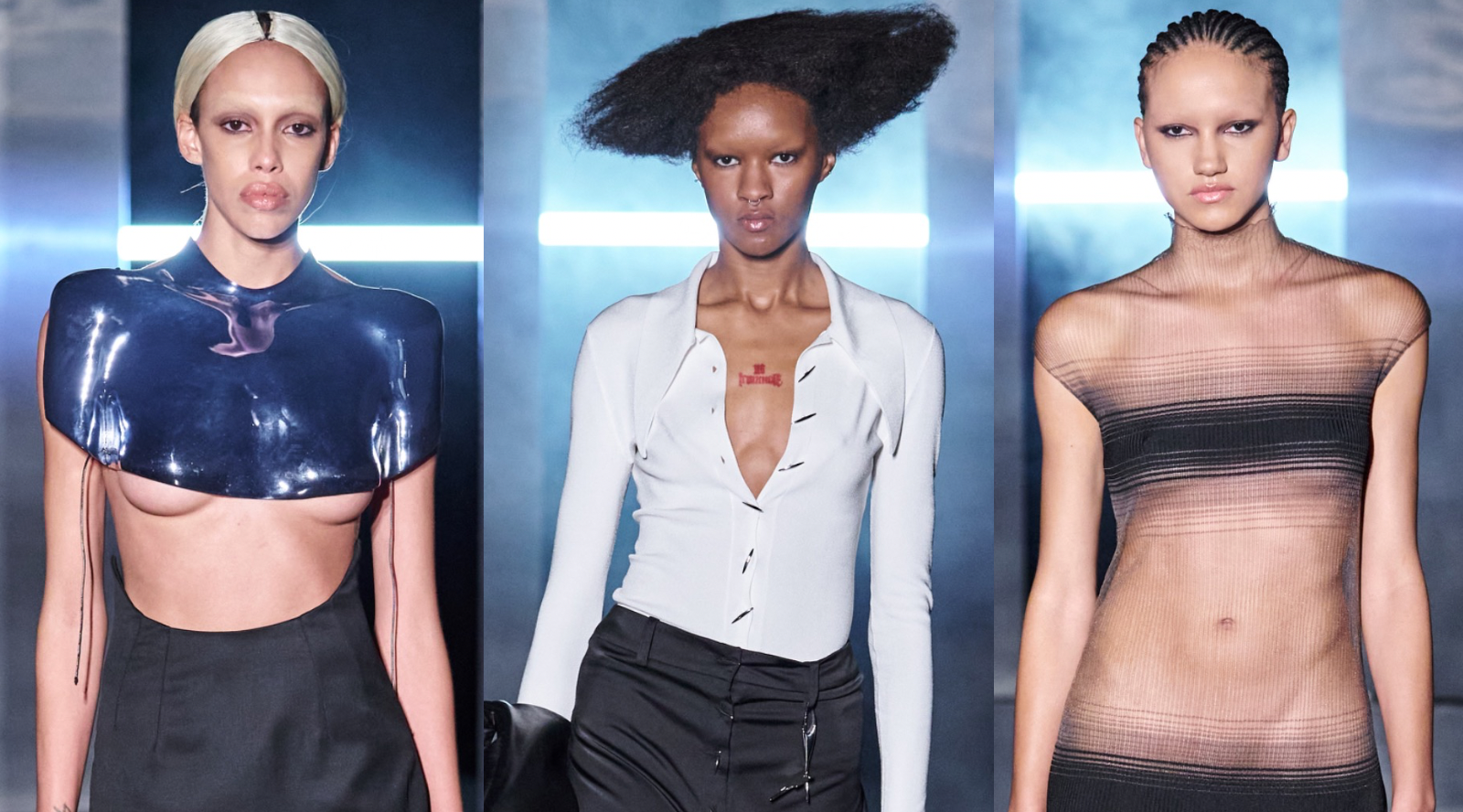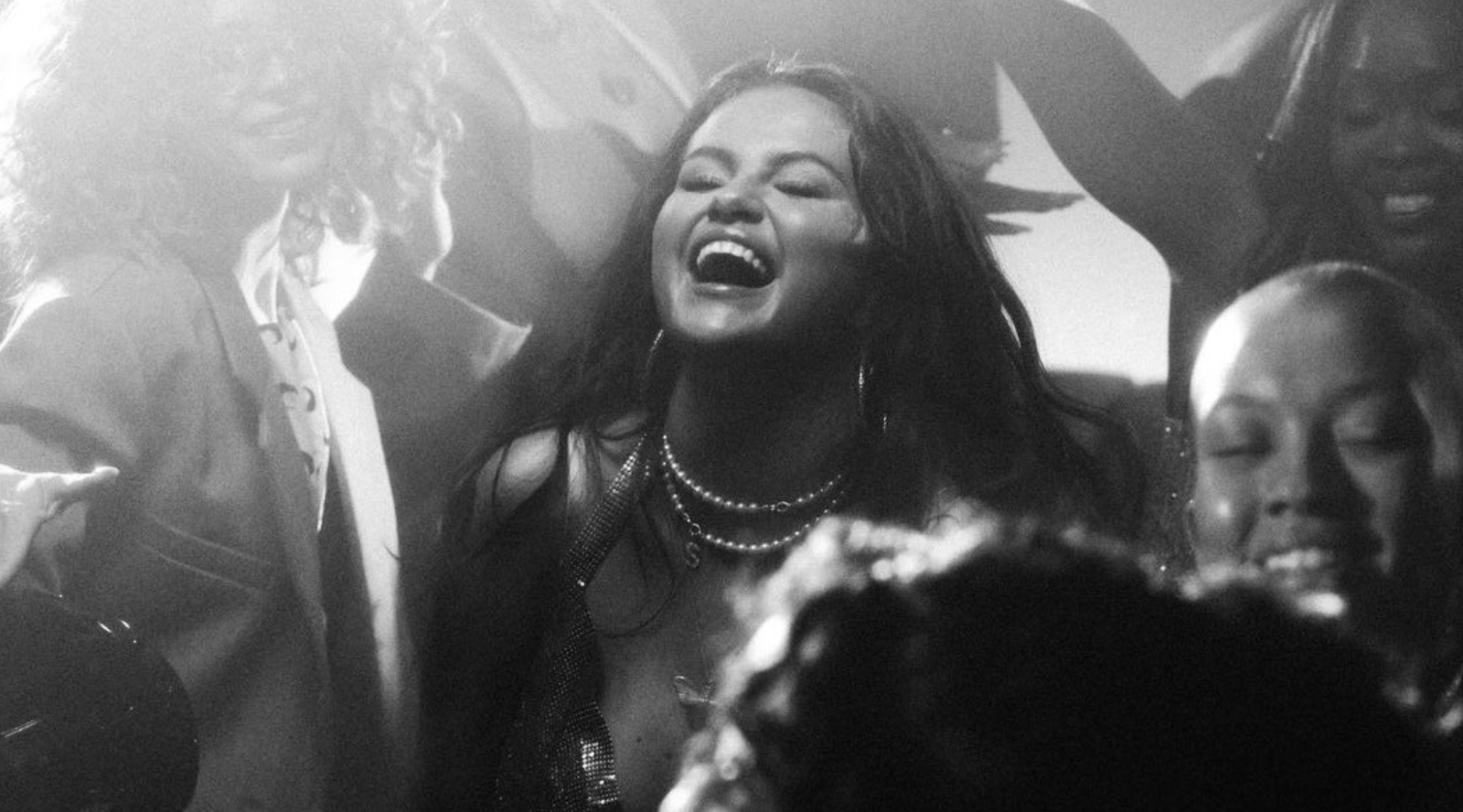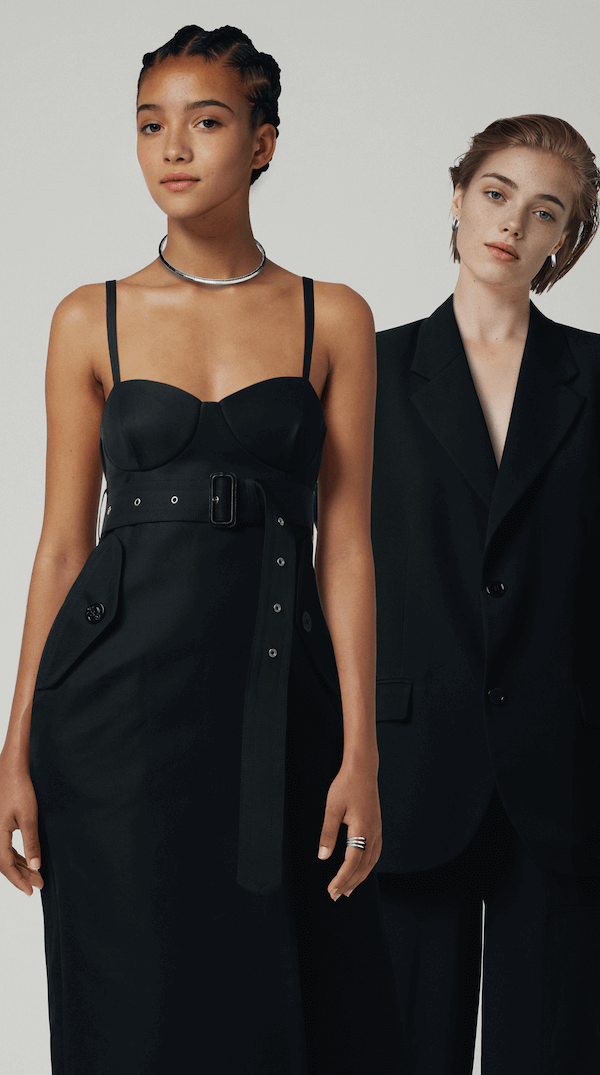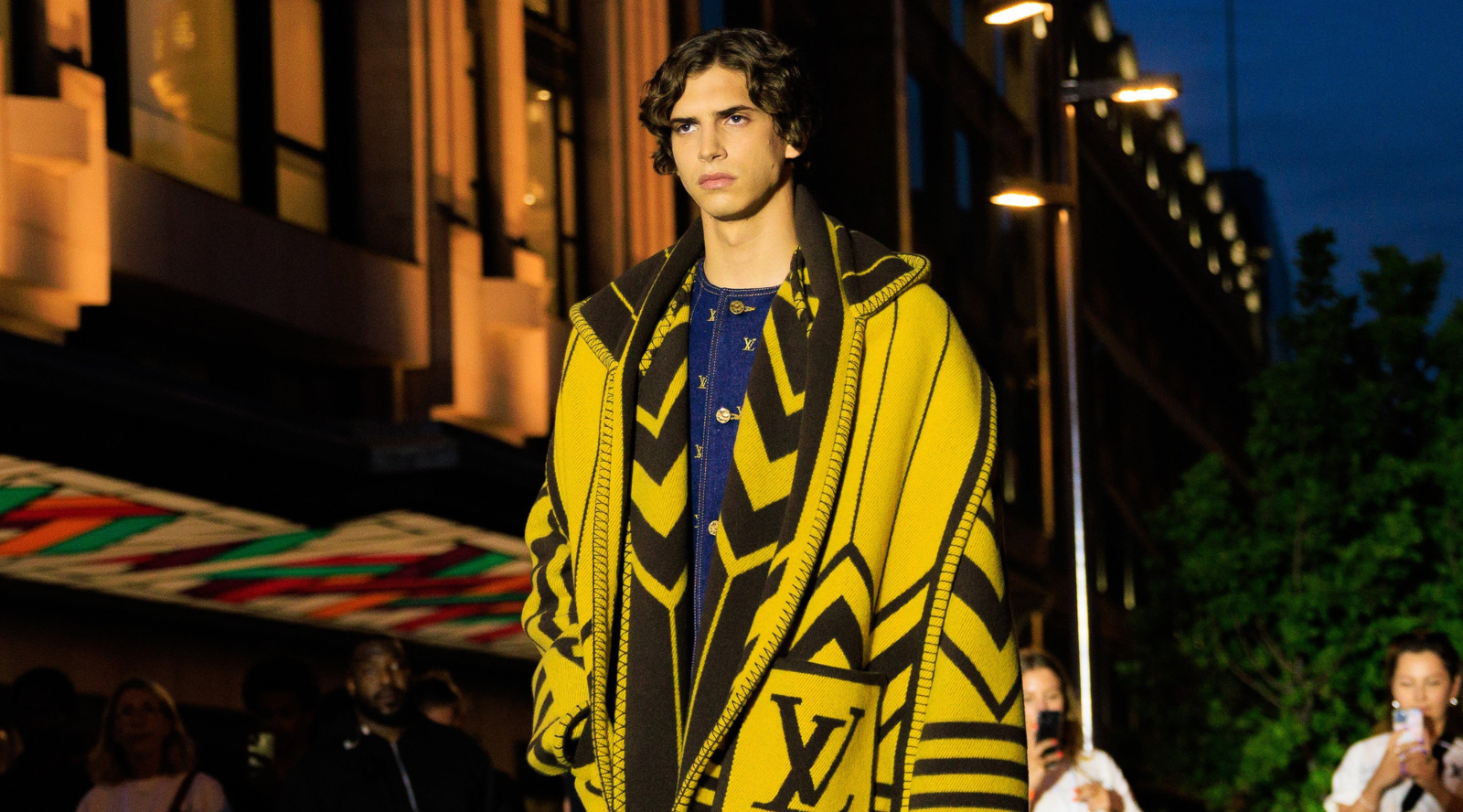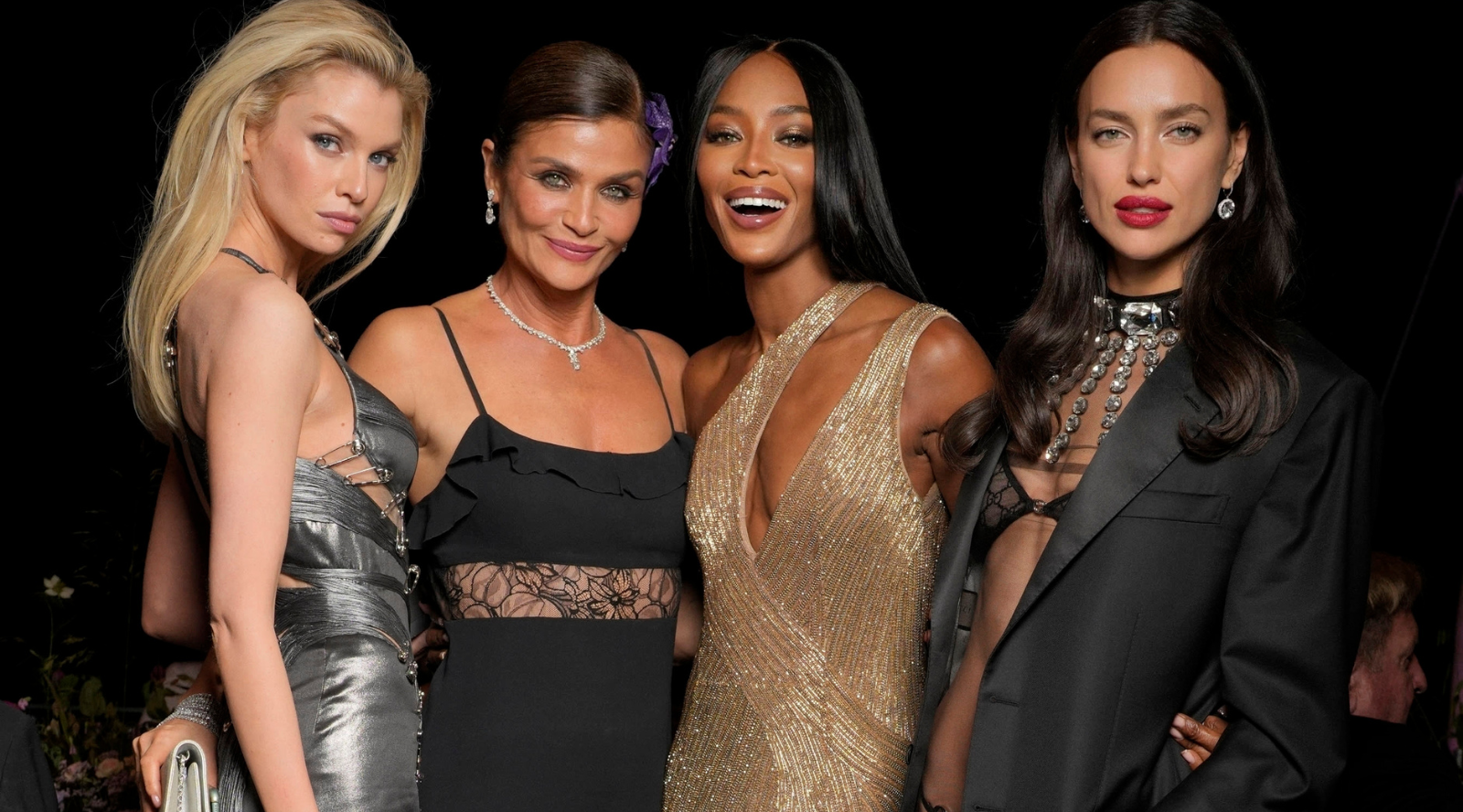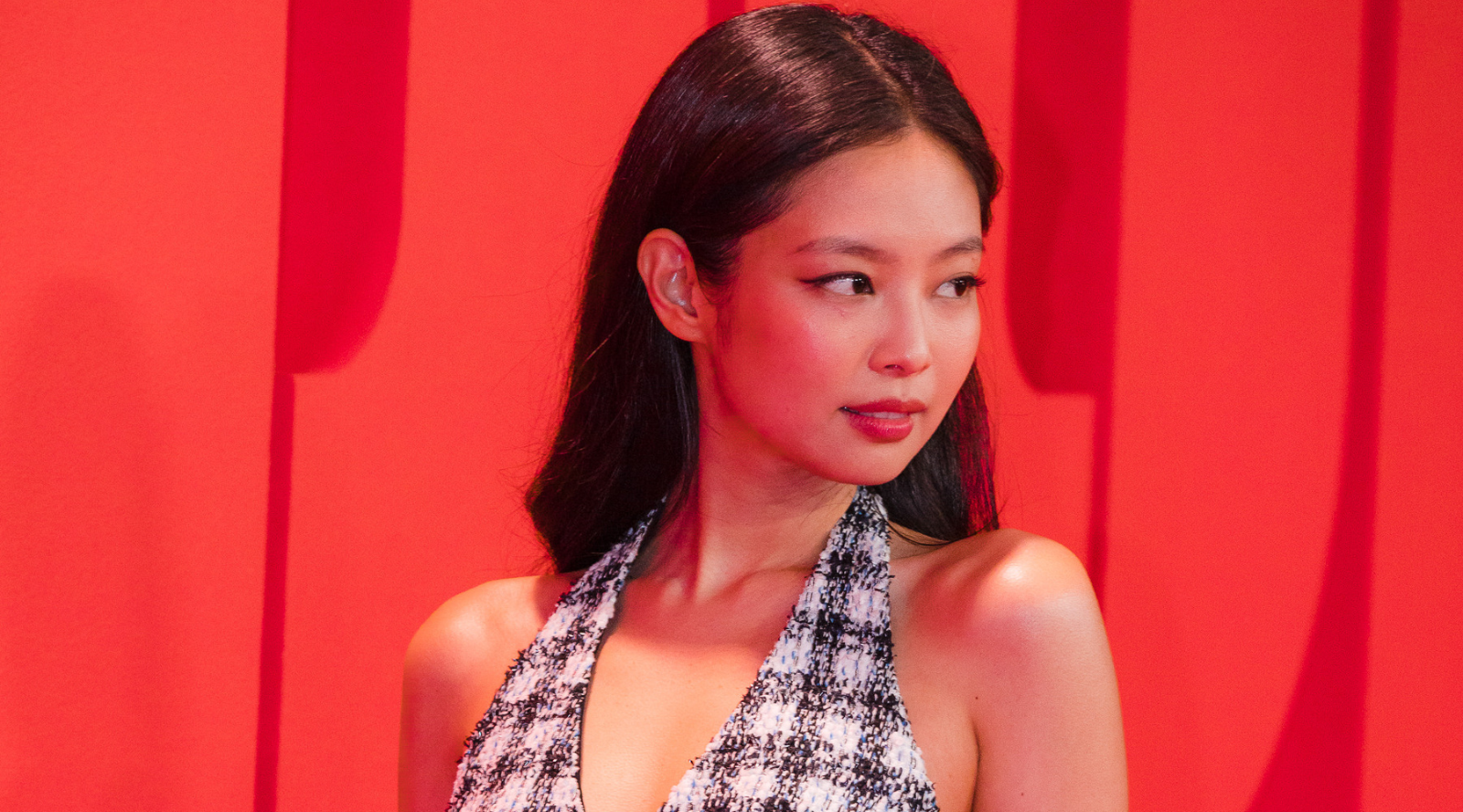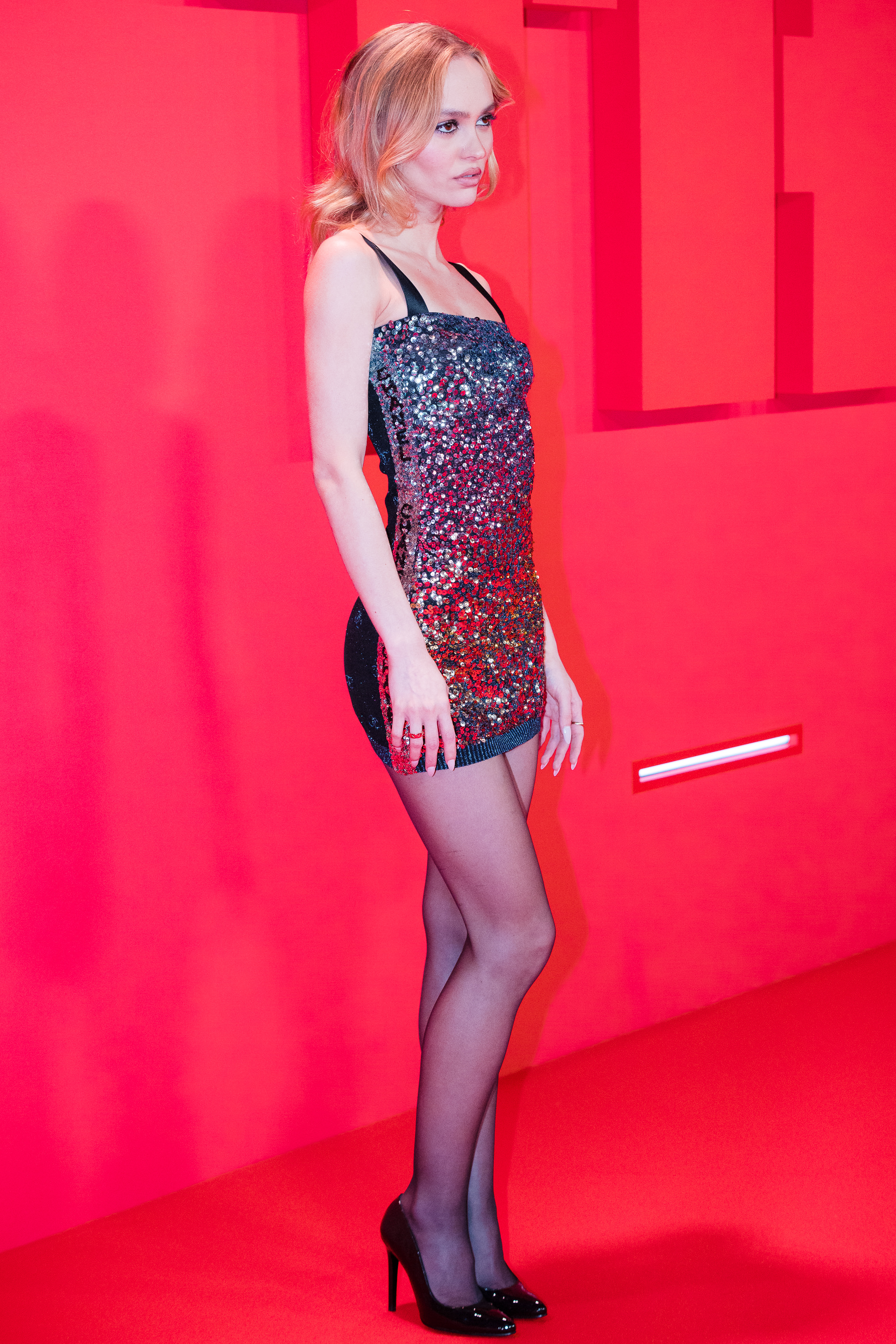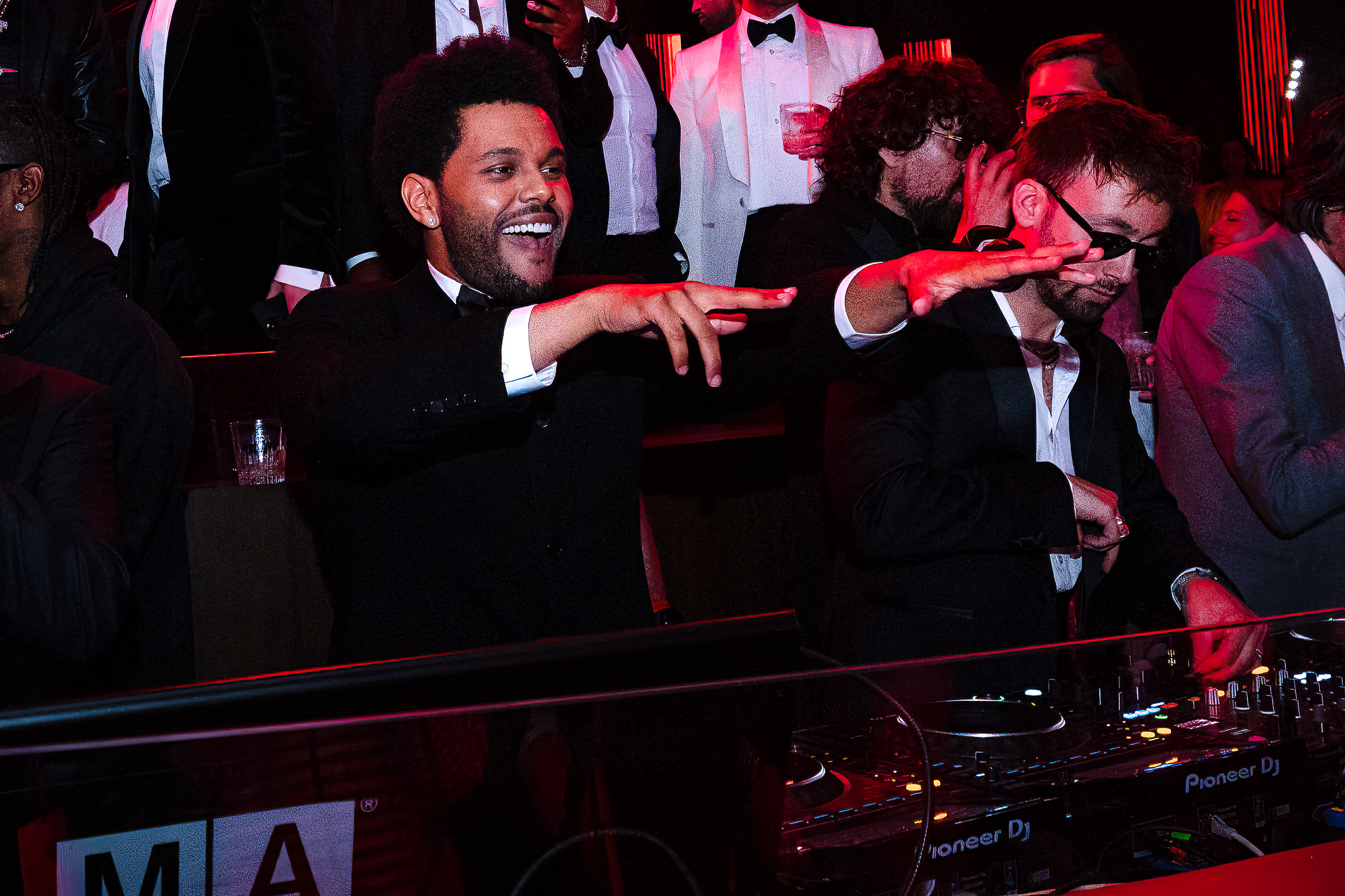There’s a palpable shift happening at New York Fashion Week. Namely, once home to a roster inevitably comprised of a slew of legacy or more established brands, the event has, in recent seasons, been more of a champion of the city’s up and coming designers. This season, designers such as Sami Miro and Grace Ling made anticipated runway debuts on the official calendar, beloved established emerges Elena Velez (who’s show culminated with a staged mud fight among its models, sparking characteristic controversy) and Luar (the week’s grand finale) drew out sizeable crowds yet again, and Peter Do’s Helmut Lang debut brought nostalgic freshness to a familiar brand. From the quintessential runway stunt (now a fashion week norm at the height of social media) to creative takes on merging design and technology, à la Collina Strada’s AI designed presentation, New York’s Spring/Summer 2024 stage had it all.
Ahead, a recap on some of the best shows the week had to offer.
SANDY LIANG
PHOTO: SANDY LIANG
Sandy Liang took to the New York Fashion Week runways with its brand essentials — rosettes, Teva sandals, ballet flats, and a plethora of preppy bows. The brand’s distinguished uniform, informed by Liang’s distinct sartorial voice, continues to influence that of every fashion girl’s Pinterest boards — pencil skirts and dad shoes galore, capris and sweater sets, princess dresses, and ballet flats. Liang utilized primary colors this season, sprinkling accents of vibrant greens, yellows and reds throughout the collection alongside neutral hues and romantic pinks.
MIRROR PALAIS

PHOTO: MIRROR PALAIS
Designer Marcelo Gaia titled this season’s Mirror Palais collection “The Return of Glamour,’’ which about sums up the brand’s runway presence (again closed by Cindy Kimberly) in a nutshell. It was a melting pot of delightfully romantic silhouettes and elements, exploring modern takes on classic womenswear styles. There was impeccable technique in ruching, corsetry and draping details, while balancing everyday styles such as mini skirts and matching sets. Then, the collection’s color palette remained unapologetic ally feminine throughout, a rosy, floor length, lace up gown the indisputable star of the show.
COLLINA STRADA
PHOTO: COLLINA STRADA
Confronting the terrifying notion of the rise of technology in fashion, particularly the looming uncertainty of what is to come next with AI, Collina Strada posed the crucial question many have pondered, especially amid the hyper glamorized machine that is Fashion Month: “Why are we here? The Earth’s on fire.” For the brand’s Spring/Summer 2024 presentation, models walked the runway with bizarre and uncomfortably forced grins, only relaxing into their normal demeanor once reaching the end of the catwalk. The show utilized AI as a creative design tool, feeding the technology previously designed collections to establish the brands design tendencies and codes, before settling on final designs. The result combines the brand’s usual maximalism with new, softer elements of intricate construction.
ELENA VELEZ
PHOTO: ELENA VELEZ
At Elena Velez, models walked (and later wrestled on) the muddy runway, taking to a Bushwick warehouse to present the latest realization of the provocative designer’s creative vision. Titled ‘The Longhouse,’ the show brought audiences deeper into Velez’s apocalyptic fantasy, showcasing uniforms rarely referenced in design for the woman who isn’t necessarily regarded as glamorous or sophisticated in the industry, feared more often than studied. Anyone familiar with the Milwaukee native’s ethos by now knows that destruction is a theme that Velez builds on collection after collection through the manipulation of unexpected textiles and metal. It’s meant to be dark, the impact of Velez’ design feeding off the designer’s own discomfort and off-beat visions of beauty, and this season was no exception.
KIM SHUI
PHOTO: KIM SHUI
Growing up in Italy, Chinese-born designer Kim Shui explains she faced discrimination from her peers and often felt alienated, inspiring the theme for this season’s whimsical fantasy, which interweaved Shui’s signature Chinese flare with romantic design elements inspired by the Italian coast (also aptly on theme with an the overarching fashion trend this past summer, dubbed ‘Europeancore’). Floral elements were overwhelming and explosive, the garments bearing 3D applique, bright patterns and ruffled textures characteristic of the ‘la dolce vita’ lifestyle that Italy is famous for. Shui explored various textiles such as leather, lace, silk and mesh, and used transparency to her advantage to create dimension and movement throughout the show.
DION LEE
PHOTO: DION LEE
New York is undoubtedly Australian designer Dion Lee’s creative playground, and the sartorial language his clothing speaks in is one New Yorkers speak fluently. Building ever so artfully on brand codes without falling into repetitive territory (the brand toyed with more denim than leather or crochet this season), models emerged in futuristic, edgy and ready-to-work ensembles. Utility details were omnipresent this season, with excessive pockets, tool belt detailing and lacing details at the forefront of the collection.
ECKHAUS LATTA
PHOTO: ECKHAUS LATTA
Eckhaus Latta’s Spring/Summer 2024 show was a futuristic and western-inspired masterpiece of everyday uniforms with sustainability and technological design at its center. This season, the brand used 3D printing technology to manufacture unique denim textiles, while much of the collection used deadstock leather in a conscious effort by the brand to produce a show with minimal waste.
HELMUT LANG
PHOTO: HELMUT LANG
There was no greater New York Fashion Week chatter than that around Peter Do’s debut as creative director at Helmut Lang — big shoes to fill for the young designer. Held in the Lower East Side of Manhattan, the show was an ode to the city the brand calls home. Chock full of referential elements and Do’s impeccable tailoring, there were accents of bright pink and yellow to highlight the collection’s deconstructed designs, with an emphasis on color-blocking and geometric shapes and stripes versus busy patterns.
